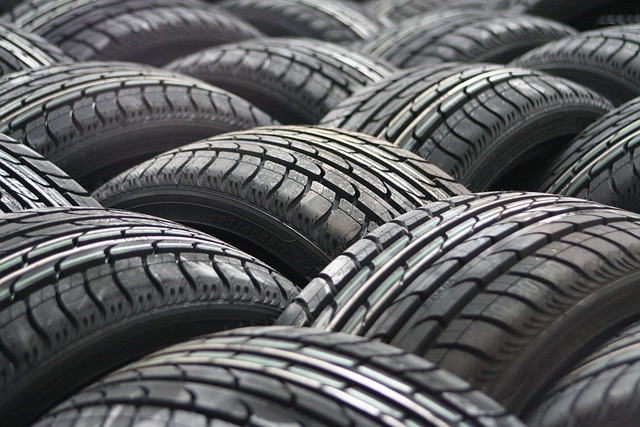Looking to register your car in California? Navigating the process can seem daunting, but with the right preparation, it’s straightforward. This guide breaks down the California car registration process step-by-step, from understanding the requirements to crucial DMV VIN verification and title transfer. We’ll walk you through gathering essential documents, scheduling a visit, and ensuring your vehicle passes inspection. Get ready to hit the road legally!
- Understanding the California Car Registration Process
- Gather Necessary Documents for DMV Vin Verification
- Schedule and Visit a California Department of Motor Vehicles (DMV) Office
- Prepare for the Vehicle Inspection and Title Transfer
- Post-Registration: Important Steps and Considerations
Understanding the California Car Registration Process

In California, registering your car involves a series of steps designed to ensure safety and compliance with state regulations. The process begins with gathering essential documents and information about your vehicle, including its make, model, year, and unique Vehicle Identification Number (VIN). Once you have this data ready, the first step is typically visiting a Division of Motor Vehicles (DMV) office or utilizing their online services for initial registration or renewal.
A crucial aspect of the California car registration process is the VIN verification, which helps in cross-referencing vehicle details against state records and ensuring authenticity. For added convenience, many residents opt for a mobile vin inspection or verification service, allowing them to complete this critical step from the comfort of their homes or places of business. This alternative method streamlines the registration process, saving time and effort.
Gather Necessary Documents for DMV Vin Verification

Before heading to the DMV for car registration, it’s crucial to gather all necessary documents for a successful dmv vin verification. This process ensures your vehicle’s history is accurately checked, which is essential for compliance with California’s registration requirements. Among the key documents you’ll need are the title of ownership, your valid driver’s license or state-issued ID card, and proof of insurance. Additionally, the DMV vin verification requires the Vehicle Identification Number (VIN) label from your car, typically located on the driver’s side door frame.
For a smoother process, consider using a mobile vin verifier or mobile vin inspection service, which can save you time by allowing for on-site VIN checks. These services often provide instant results, confirming your vehicle’s details directly with the manufacturer and streamlining the registration process.
Schedule and Visit a California Department of Motor Vehicles (DMV) Office

To register your car in California, scheduling a visit to a local DMV office is a crucial step. The California Department of Motor Vehicles (DMV) provides all the necessary services for vehicle registration, including VIN (Vehicle Identification Number) verification, which is essential to ensure the legitimacy and history of your car. During your visit, you’ll need to bring along important documents such as proof of ownership, identification, and insurance.
Many Californians opt for convenient alternatives like mobile VIN verification services, which can be a time-saver. These services send a trained professional to conduct an on-site VIN inspection, ensuring all details are accurate before registration. This option is particularly useful if you’ve recently purchased a used vehicle, as it allows you to navigate the registration process swiftly and efficiently, without having to visit a DMV office in person.
Prepare for the Vehicle Inspection and Title Transfer

Before you can register your car in California, you’ll need to ensure that your vehicle passes a thorough inspection. This involves both a visual examination and a verification of the Vehicle Identification Number (VIN) through the California Department of Motor Vehicles (DMV). Start by obtaining a mobile VIN inspection or conducting a VIN lookup online to check for any outstanding issues or recalls related to your car’s make, model, and year. The DMV will then perform their own vin inspection to ensure that your vehicle meets all safety standards.
During this process, you’ll also need to transfer the title from the previous owner to yourself. Gather essential documents, such as proof of identification, the bill of sale, and any other relevant paperwork. Once these steps are complete, you can proceed with the registration at a DMV office, where they will issue a new registration and license plate for your vehicle.
Post-Registration: Important Steps and Considerations

After successfully registering your car with the DMV, there are several crucial steps to ensure a smooth ownership experience. One critical process is completing a vehicle identification number (VIN) verification, which can be done through a mobile VIN inspection or by visiting a DMV office. This step is essential for both safety and legal compliance, as it confirms the vehicle’s history and ensures it meets all required standards.
A mobile VIN verification service provides convenience by allowing you to check your car’s history from the comfort of your home or workplace. Alternatively, a trip to the DMV can be scheduled for those who prefer in-person services. Regardless of the method chosen, ensuring your car’s VIN is accurately verified post-registration is vital to maintaining proper ownership and avoiding any potential issues down the line.
Registering a car in California involves understanding the state’s process, gathering essential documents, and visiting a DMV office. The key steps include completing the required forms, passing a vehicle inspection during the dmv vin verification, and ensuring all legal ownership transfers are accurate. Once registered, it’s crucial to stay up-to-date with annual renewals and maintain proper documentation for future reference.
